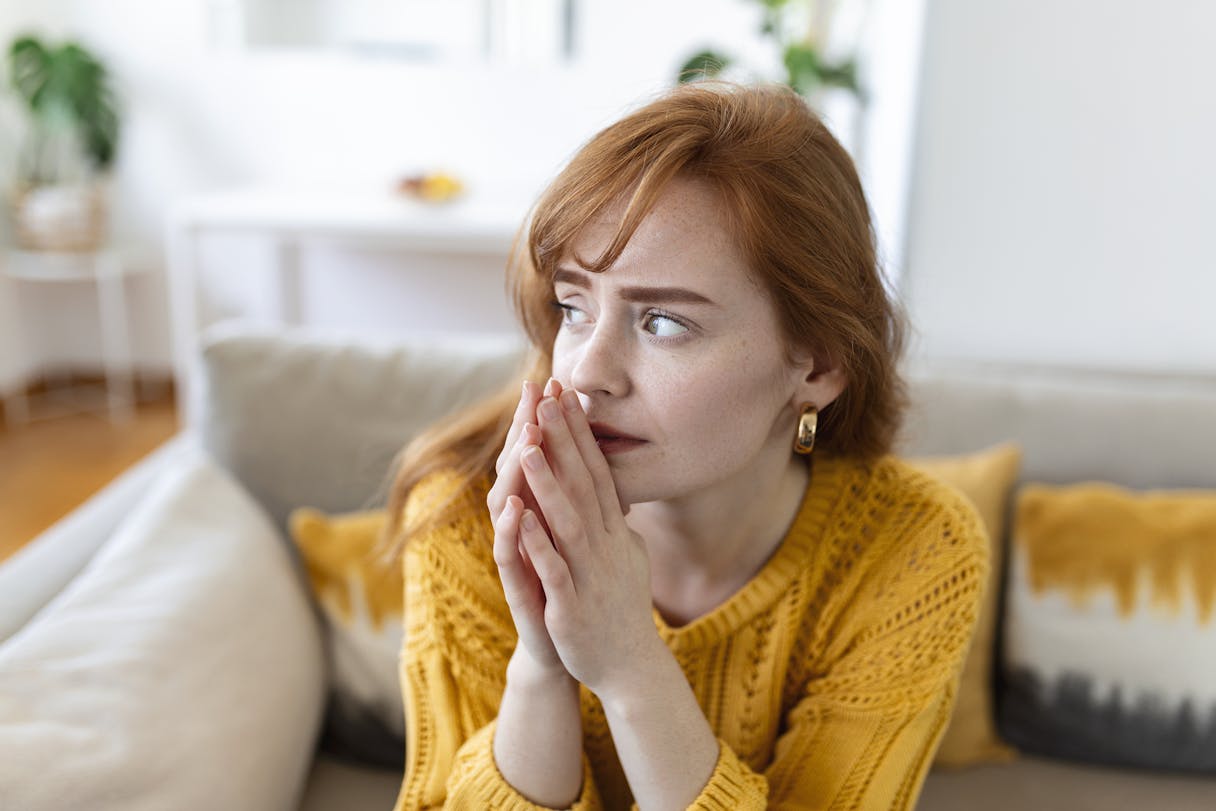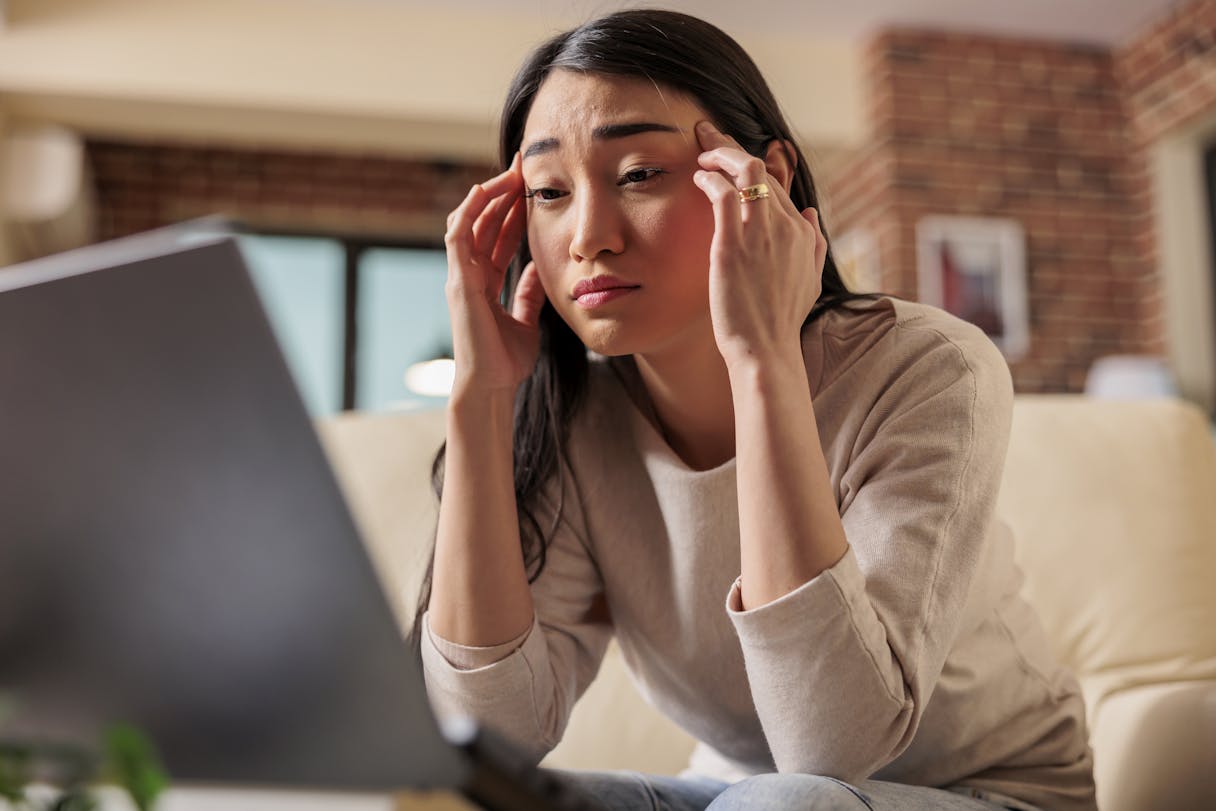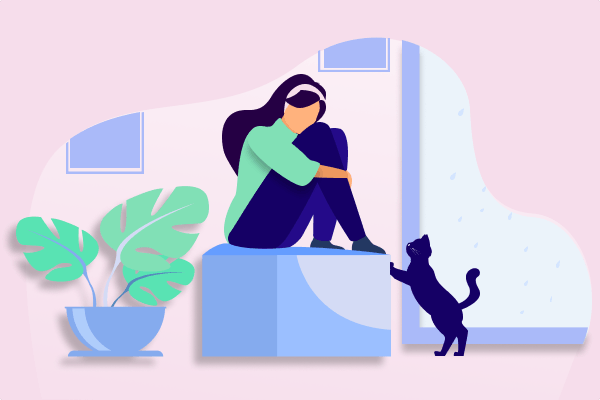Managing depression alone can be difficult. Find a therapist, prescriber, or both who meets your needs. Learn more
Some days feel harder than others. Occasionally, this feeling persists for a week or a month. And other times, it lasts for a year or more. If these feelings don't seem to change, you might have anxiety and/or depression—the two often go hand in hand. No matter who you are or what situation you're in, you've gotten as far as looking up the symptoms, and really, that's the first step towards feeling better. Here are the most notable signs of depression and anxiety and steps you may take if you’re feeling down and anxious.
How to know if you if you have anxiety or depression:
- Have you been feeling hopeless, helpless, or worthless?
Do you feel "empty" or stuck somewhere, like neither you or anyone else can improve your situation? Do you feel a sense of guilt for being in the situation you're in? If you feel an ongoing sense that you’re not in a great place and nothing will change, you might be experiencing a classic sign of depression. - Notice a lack of interest in the activities you’ve enjoyed in the past?
Maybe you've always loved to garden but can't find it in yourself to repot your snake plant. If you find yourself feeling as if it were all meaningless, you may be experiencing a sign of depression. - Do you feel persistent fatigue or even aches and pains?
Your body might feel heavy and slow. Being tired is normal, but feeling tired all the time might be indicative that something more serious is happening. Be aware that fatigue can be a symptom of a plethora of other health conditions outside of depression and anxiety. - Are you zoning out or finding it difficult to concentrate or make decisions?
Do you feel afraid of making the wrong choice? Experiencing decision paralysis or spacing out when you normally would be concentrating could also be signs of depression. - Have you been engaging in new or excessive behaviors?
Common ticks to look out for are sleeping or eating too much or too little. Some may turn to alcohol or engage in other risky behavior. - Do you feel easily irritated? Or are you experiencing mood swings?
If you're feeling short with those you interact with, you might be experiencing a sign of depression. In the same vein, if you're overly critical of yourself, this could also be a sign of depression. - Worrying excessively as if your thoughts are spiraling?
Perhaps you're having trouble reining in your thoughts. You could be imagining the worst-case scenario or can't break down a problem that seems large and unresolvable. Do you feel like these thoughts take you away from living in the present? This could be a sign of anxiety. - Are you more withdrawn or want to spend more time alone?
Whether we're extraverts, introverts, or just need copious amounts of alone time, sometimes we might find ourselves with an extra-strong urge to be alone. It could be because we're too tired to be with people or it could be a symptom of depression.
Steps to take to address depression or anxiety
Know that you're not alone. Countless others experience depression at different points in their life. According to the National Insitute of Mental Health, as many as 17.3 million adults in the United States experience depression in their lifetime. It may feel hopeless now, like you're in a never-ending tunnel, but know that there is a light at the end, even if you don't see it yet. Here's how you might be able to overcome your mental health challenges.
- Talk to friends and family, people who can be compassionate, understanding, and supportive.
Even if you feel alone, remember that there are going to be one or two people in your corner. That may be family, an old or new friend, or a community member, there is always someone who cares. And if you're really not in a good place mentally and need to speak with someone now, please call the National Suicide Hotline at +1-800-273-8255. - Write your thoughts down to release and process your immediate feelings.
Journaling can be cathartic and reflective. As you write, your mind slows down to process your thoughts and you might be able to identify fallacies in your beliefs. Journal to recognize that your feelings are valid, and one day in the future when you're feeling better, you'll be able to look back on this time and remember your strength in overcoming your thoughts and feelings. - Take Cerebral’s free emotional assessment.
Cerebral provides professional mental health services like depression and anxiety diagnosis, medication, and therapy. We are here to support you holistically. Our Care Counselors work with your prescribing provider monthly to track your medication management and our Therapists meet with you weekly.
Long-term plans
- Exercise to lift your mood.
Exercise for just a day and you'll already feel the benefits of being active. If you don't feel compelled to exercise, one idea is to reframe walking as simply getting fresh air. Exercise consistently and you will see an overall mood boost. - Consider therapy for professional support.
You can only help yourself so much before your thoughts become a noisy echo chamber. Even if you have friends and family you speak with, pay attention to whether it's straining your relationships. The stigma around mental health is dwindling every year as it becomes normalized in conversations in pop culture and through open discussion from public figures like Prince Harry, Demi Lovato, Chris Evans, Ryan Reynolds, Kristen Bell, Emma Stone, Billie Eilish, and Kendrick Lamar. - Talk to a prescribing provider to see if medication is right for you
Medication isn't right for everyone. Each person's journey to better mental health is unique. But for many, medications can be a key to unlocking healthier pathways in their brains and thought patterns. Talk to a prescribing provider for more information on the kinds of medication, and whether or not they would be a good fit for your mental health journey.
Here's a quote from Lady Gaga in a letter on her clinical depression for her nonprofit, Born This Way Foundation.
"There is a lot of shame attached to mental illness, but it's important that you know there is hope and a chance for recovery."
--
We might feel sad and anxious, but working to feel better is a choice we will always have. Whether you're looking for someone to speak with or a professional diagnosis, we hope you consider Cerebral.

Understanding and Addressing the Feelings Behind Anxiety

9 Physical Symptoms of Anxiety

The Difference Between Anxiety and Fear

If you’re having a mental
health emergency
If you're in emotional distress and
need immediate support
For National Suicide
Prevention Hotline
